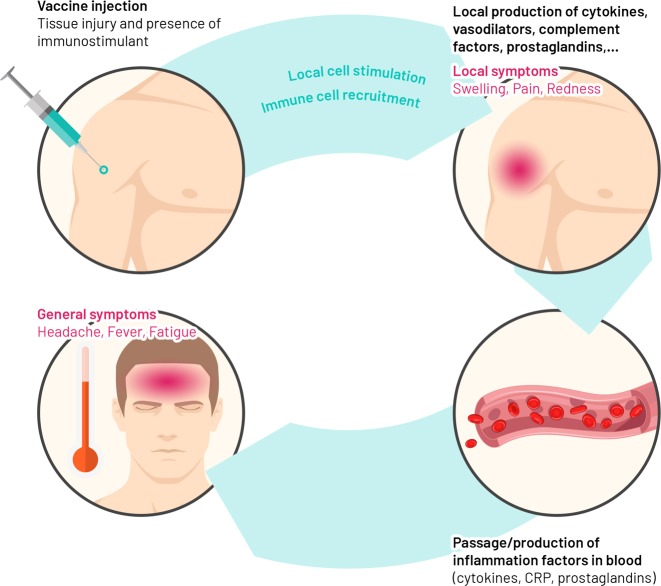Fig. 1.
Summary of expected biological mechanisms underlying the development of reactogenicity symptoms. Vaccine antigens and immune enhancers (as adjuvants) injected into the muscle are recognised by the body as potential pathogens and/or danger signals. This recognition leads to the stimulation of local cells, followed by the recruitment of blood immune cells to the local site and the production of different soluble factors including vasodilators and cytokines, which may trigger the development of signs and symptoms of local inflammation (pain, redness and swelling). The passage of some of those factors in the bloodstream, as well as the production of other systemic factors by immune blood cells or distant organs (e.g. liver), may contribute to the development of general symptoms (fever, myalgia, headache etc) in the vaccinee. CRP C-reactive protein

